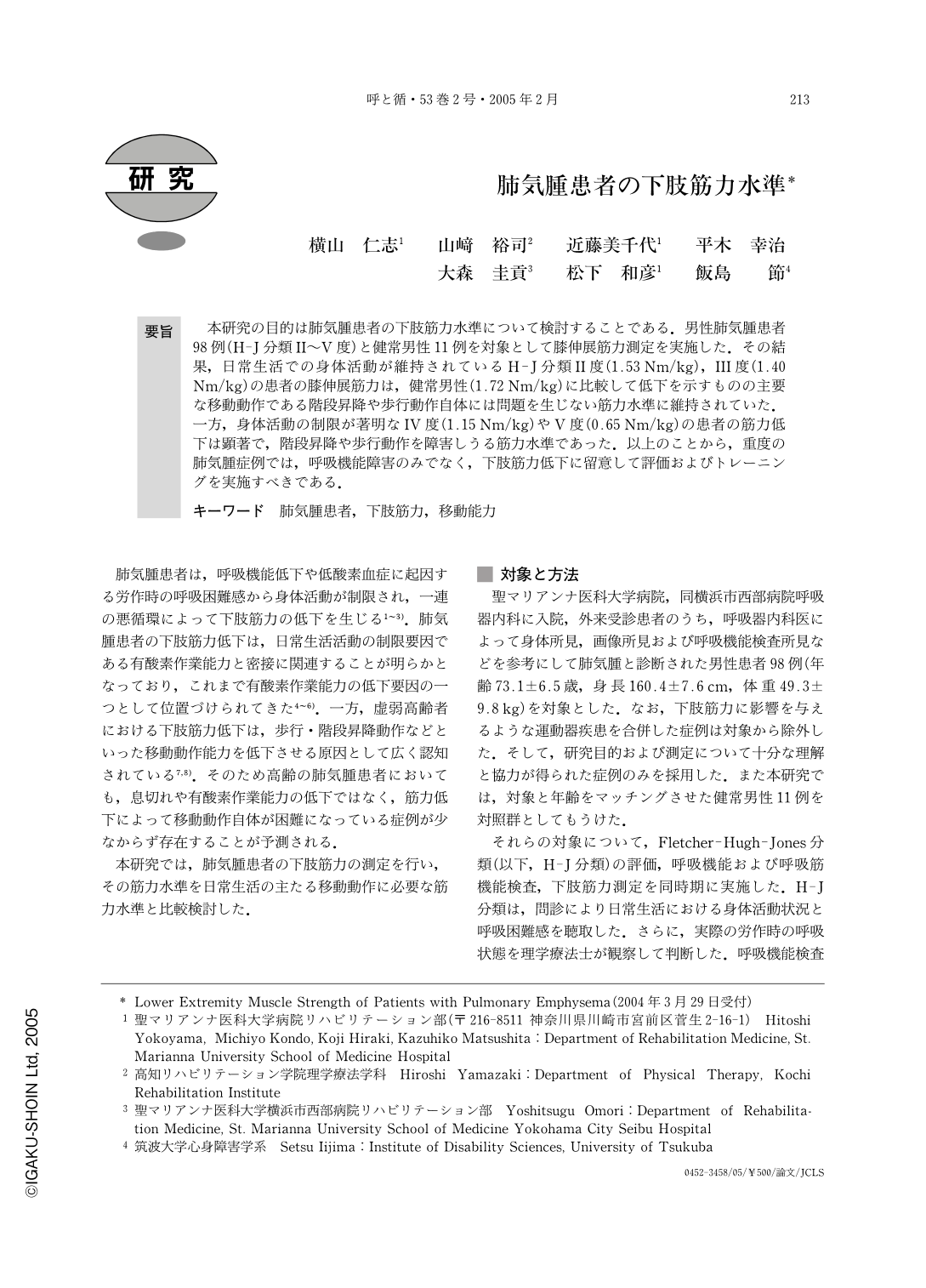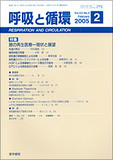Japanese
English
- 有料閲覧
- Abstract 文献概要
- 1ページ目 Look Inside
- 参考文献 Reference
- サイト内被引用 Cited by
要旨
本研究の目的は肺気腫患者の下肢筋力水準について検討することである.男性肺気腫患者98例(H-J分類II~V度)と健常男性11例を対象として膝伸展筋力測定を実施した.その結果,日常生活での身体活動が維持されているH-J分類II度(1.53Nm/kg),III度(1.40Nm/kg)の患者の膝伸展筋力は,健常男性(1.72Nm/kg)に比較して低下を示すものの主要な移動動作である階段昇降や歩行動作自体には問題を生じない筋力水準に維持されていた.一方,身体活動の制限が著明なIV度(1.15Nm/kg)やV度(0.65Nm/kg)の患者の筋力低下は顕著で,階段昇降や歩行動作を障害しうる筋力水準であった.以上のことから,重度の肺気腫症例では,呼吸機能障害のみでなく,下肢筋力低下に留意して評価およびトレーニングを実施すべきである.
Summary
The purpose of this research was to investigate the lower extremity muscle strength of patients with pulmonary emphysema. Subjects were 98 male patients with pulmonary emphysema(H-J classification from II to V) and 11 healthy men, and their lower extremity muscle strength was examined. The results showed that patients with H-J classification of II(1.53Nm/kg) and III(1.40Nm/kg) who had showed relatively good physical abilities maintained sufficient muscle strength for primary locomotion activities such as stair-climbing and gait, although their abilities were lower than those of healthy men(1.72Nm/kg). Patients with a H-J classification of IV(1.15Nm/kg) and V(0.65Nm/kg), however, who sufered a limitation in physical abilities, exhibited a marked decrease in lower extremity muscle strength. It was speculated that the muscle strength level was lower than that necessary for stair-climbing and gait. These results suggest that the evaluation and exercise recommedations for patients with pulmonary emphysema should be made taking not only their declined respiratory function but also the decrease in their lower extremity muscle strength into consideration.

Copyright © 2005, Igaku-Shoin Ltd. All rights reserved.


